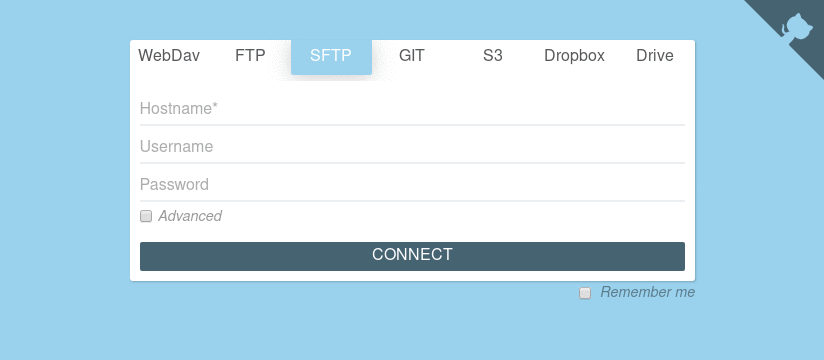
A Dropbox-like file manager that let you manage your data anywhere it is located:FTP • FTPS • SFTP • WebDAV • Git • S3 • NFS • SMB • Artifactory • LDAP • Mysql Storj • CardDAV • CalDAV • Backblaze B2 • Minio Dropbox • Google Drive



Filestash started as an attempt to solve the "Dropbox problem" by abstracting the storage layer, allowing you to "bring your own backend" by implementing this interface:
type IBackend interface {Init(params map[string]string, app *App) (IBackend, error) // constructorLs(path string) ([]os.FileInfo, error)// list files in a folderCat(path string) (io.ReadCloser, error) // download a fileMkdir(path string) error // create a folderRm(path string) error// remove somethingMv(from string, to string) error // rename somethingSave(path string, file io.Reader) error // save a fileTouch(path string) error // create a fileLoginForm() Form // dynamic form generation for the login}The software is effectively 2 distinct parts: Core and Plugins. Plugins act as "Lego blocks" that shape all the opinions on how the file manager operates, such as who can do what and where (aka, the authorisation), how the search features work (e.g., recursive search, full text search, ...), how users are authenticated (e.g., passthrough to the storage layer, LDAP, OIDC, SAML, signed URLs), how the application behaves when opening different file types, etc...
The architecture is designed to enable implementers to build file managers that are fit for purpose. To cite an example, several control panels for elevators in Europe feature QR codes generated by Filestash. Technicians responsible for their maintenance scan these QR codes to access the complete history of the elevator, upload new records, access relevant external resources, and view a banner displaying location specific metadata from the ERP. What would have been a complex custom solution was made possible through the addition of two plugins: one for QR code generation and another for ERP integration. Everything else was off the shelf.
DocumentationGetting startedInstallationAPISupportFor companies -> support contractFor individuals -> #filestash on IRC (libera.chat). To financially contribute to the project:Bitcoin: 3LX5KGmSmHDj5EuXrmUvcg77EJxCxmdsgWOpen CollectiveCreditsContributors and folks developing awesome librariesThis project is tested with BrowserStackLogo derived from the work of ssnjrthegr8, Iconography from flaticon, fontawesome and materiallibvips and libraw. Those libraries are statically compiled in Filestash. Instructions to build Filestash is available here and instructions to create your own static library for libvips and libraw is to be found here

